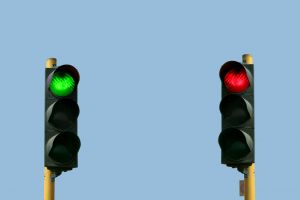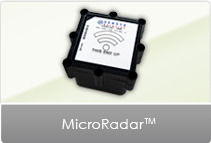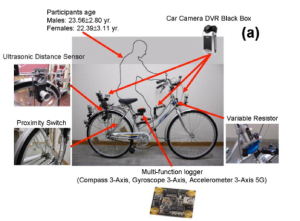
I prefer the one on the left but spend too long, too often, looking at the one on the right
OK, so you were less than overwhelmed by my shock revelations that Sturmey Archer might just perhaps possibly may be about to produce a 16 speed hub gear for bicycles. Jeez, some people are never satisfied.
How about this then? This will turn your world upside down. If it doesn’t then don’t blame me because the problem lies deep in your psyche and you’re not the kind of person I want visiting my blog anyway.
The big technology revelation today is, wait for it, something that means you won’t have to hang around at traffic signals waiting for them to go from red to green while you’re standing patiently astride your bicycle for ages and ages. There, quite a shocker, I think you’ll agree. What follows is the explanation of the problem and the latest solution.
Too many traffic signals have induction loops ahead of them, cut into the road. They detect the metal in cars, lorries, buses and even motorbikes with ease, and pass the data to the control box. When the system inside the control box decides the traffic’s been queuing long enough, it gives them the green light.
But induction loops are utter rubbish at detecting cyclists and bicycles. The problem is that most cyclists and many parts of bicycles are not made out of metal so the induction loops don’t spot us when we arrive. Subsequently, the control box doesn’t know we’re there and, unless another vehicle pulls up, it will never change the signal to green and we’ll wait. And wait. And wait until our patience snaps and we ride through a red light, get spotted by a saintly motorist who then writes to their local newspaper/councillors/police to condemn every single cyclist in the world as a monster the likes of which hasn’t been seen riding on our planet since Attila the Hun.
Of course, we all know that it’s all our fault, we cyclists should stop whinging and be grateful that we’re allowed on the roads anyway. The obvious solution is that we should all start wearing chain mail and suits of armour containing sufficient metal to be seen by the induction loops.
However, some of us think that there should be a better way for traffic signals to know that cyclists are waiting for a green light. Fortunately, people at Sensys Networks agree. They make their money from traffic technology and they’ve seen how roads agencies might like to buy products that will assist the growing number of cyclists.

Seen this on the road? Let me know – and ask your local traffic engineers to install them wherever there’s traffic signals
They’ve invented something branded as MicroRadar. It’s a little box that can be sunk into the road surface. It has a battery so it doesn’t need to be connected to any power supply. It communicates wirelessly with the control box. And, as its name suggests, it uses radar – to detect cyclists. Yippeee!
The diligent among you, by which I mean all of the most beautiful and clever readers of this blog, will already have searched for Sensys and MicroRadar and discovered that, quite unusually, this blog is two years behind the curve. I acknowledge that Sensys released the product in 2011. So why am I devoting valuable pixels to it now?
Because I have discovered that the first such unit in the UK is being trialled. Somewhere out there, on a road on the British mainland, cyclists are being detected by radar and getting a green light on the traffic signals when they might otherwise have to wait for an annoyingly long time.
Talking of being annoying, I’m going to have to be annoyingly reticent about its exact location. I know in which urban conurbation it is sited but I would be breaching confidentiality if I was any more specific. I wasn’t told not to reveal it but the information came to me without any knowledge I’d be writing about it here. See? I do have some morals. Not many, for sure, but I really don’t want to end up as aggregate under some new motorway widening scheme so I shan’t push my luck any further.
If you can be as patient as a cyclist waiting for a green light, the location will probably be released on 16th April 2013 and, if I remember, I’ll post it on the blog. Until then, if you want to know exactly where it is, you’ll have to study the road surface every time you approach some traffic signals.
Of course, if you do spot it and happen to post the info on the web before 16th April, please let me know so that I can republish it without fear of being accused of breaking my informant’s trust.
In the meantime, in case my informant is unhappy with this blog entry and for self-protection reasons only, I shall now put on my chain mail and suit of armour.




